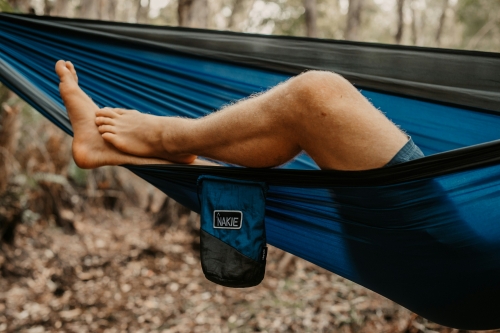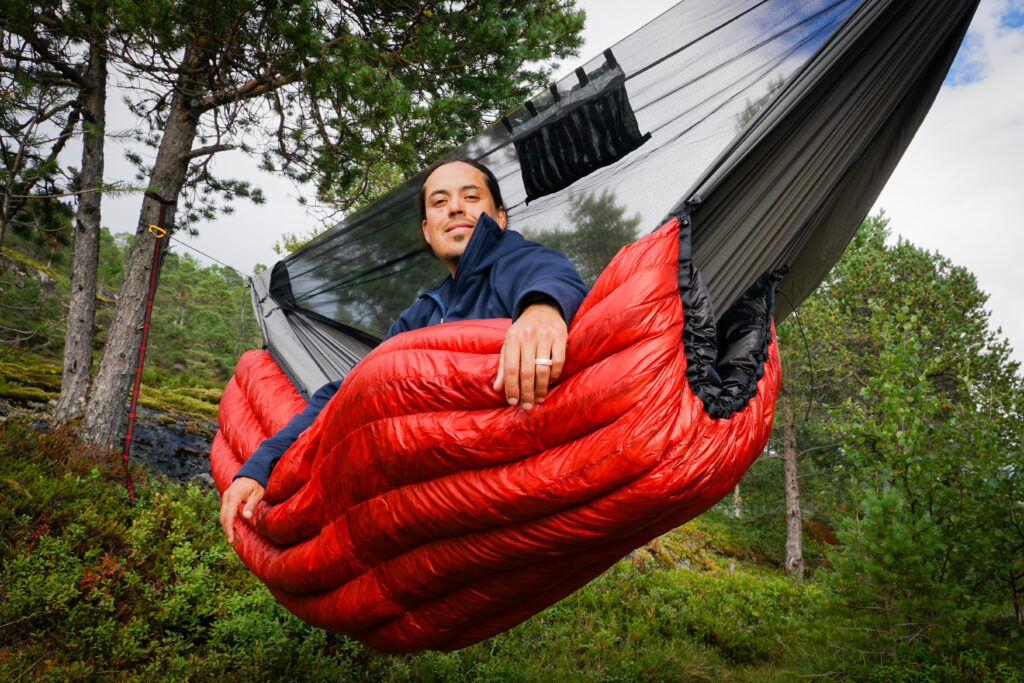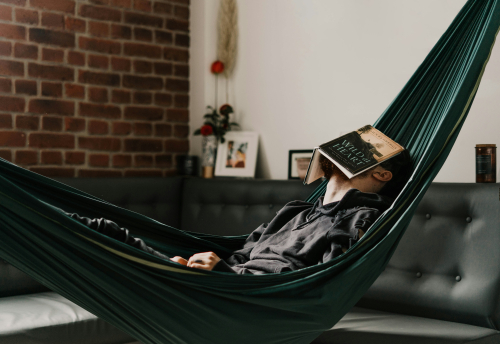Sleeping in a Hammock: Health Benefits, Safety Tips & More

Imagine swaying gently under the stars, lulled by the whisper of leaves. Intriguing, right? But is a hammock just a dreamy indulgence, or a genuine sleep haven? The answer might surprise you. Studies suggest hammocks can promote better sleep posture and even reduce back pain. Intrigued? Dive into this guide to explore the surprising health benefits of hammock slumber, uncover essential safety tips, and learn how to create your own cozy cocoon under the open sky.
In recent years, there has been a notable surge in the popularity of sleeping in hammocks. What once was considered a leisurely pastime reserved for lazy afternoons by the beach or in the backyard has now evolved into a bona fide sleep trend embraced by adventurers, outdoor enthusiasts, and even urban dwellers seeking a novel sleeping experience. But what lies behind this growing fascination with hammock sleeping? Let’s delve into the reasons driving this trend and explore the benefits it offers.
Health Benefits of Sleeping in a Hammock
One of the most compelling reasons to consider hammock sleeping is its potential to enhance sleep quality. Unlike conventional beds that often restrict movement and pressure points, hammocks cradle the body in a gentle, ergonomic manner, promoting a deeper and more restorative sleep. Research suggests that the rocking motion of a hammock can mimic the sensation of being rocked to sleep as a baby, triggering the brain to enter a state of relaxation conducive to falling asleep faster and staying asleep longer. Additionally, hammocks can help alleviate issues like insomnia and sleep apnea by encouraging proper alignment of the body, resulting in a more uninterrupted sleep cycle.
Reduced back pain and pressure points
For those plagued by back pain or discomfort from pressure points, switching to a hammock for sleeping can offer significant relief. Traditional mattresses often exacerbate these issues by exerting uneven pressure on the body, leading to stiffness and pain. In contrast, hammocks distribute weight evenly across the body, alleviating pressure on sensitive areas like the hips and shoulders. The gentle swaying motion of a hammock also helps to relax tense muscles and promote spinal alignment, reducing the likelihood of waking up with aches and pains. Many individuals who make the switch to hammock sleeping report a noticeable decrease in back pain and an overall improvement in their spinal health.
Enhanced relaxation and stress relief
In today’s fast-paced world, stress and anxiety can take a toll on both mental and physical well-being. Hammock sleeping offers a sanctuary of tranquility where individuals can escape the hustle and bustle of daily life and unwind amidst nature’s embrace. The gentle rocking motion induces a sense of calmness and relaxation, promoting the release of endorphins and reducing levels of cortisol, the stress hormone. Studies have shown that spending time in a hammock can lead to lower blood pressure, decreased heart rate, and improved mood—all of which contribute to a greater sense of overall well-being. Whether used for an afternoon nap or a full night’s rest, hammocks provide a blissful refuge where stress melts away, and rejuvenation takes center stage.
By harnessing the inherent benefits of hammock sleeping, individuals can not only enjoy a more restful night’s sleep but also reap the rewards of improved physical and mental health. Whether seeking relief from back pain, a respite from stress, or simply a more comfortable sleep experience, hammocks offer a holistic solution that embraces the body, mind, and soul. So, next time you’re contemplating your sleep setup, consider trading in your traditional mattress for the gentle sway of a hammock—you may just find yourself drifting off into the sweetest dreams imaginable.
Exhilarated after conquering the Inca Trail, Jordan found his tent pitched on uneven, rocky ground. Worried about a restless night, he remembered his friend raving about hammock camping. With a quick Google search [search hammock camping ON National Geographic nationalgeographic.com], Jordan learned how to safely hang his hammock between trees, creating a level, comfortable sleeping platform. He drifted off to sleep lulled by the jungle sounds, pain-free and grateful for this ingenious alternative!
Safety Tips for Hammock Sleeping
Before embarking on your hammock sleeping adventure, it’s crucial to select the right hammock that meets your needs and ensures a safe and comfortable experience. Opt for hammocks made from durable, high-quality materials that can support your weight and withstand outdoor elements. Consider factors such as size, weight capacity, and suspension system when choosing a hammock to ensure it can accommodate your body size and sleeping preferences. Additionally, look for hammocks with built-in safety features such as reinforced stitching and sturdy carabiners to provide added peace of mind while you sleep suspended above the ground.
Setting up the hammock properly
Proper setup is essential for ensuring the safety and stability of your hammock sleeping environment. When selecting anchor points for your hammock, choose sturdy trees or structures that can support your weight and withstand the forces exerted by your body. Ensure that the hammock is hung at an appropriate height to prevent excessive sagging or contact with the ground. Use strong, reliable suspension straps or ropes to secure the hammock to the anchor points, making sure to follow manufacturer guidelines for proper installation. Regularly inspect your hammock and suspension system for signs of wear or damage, and replace any worn components to maintain optimal safety.
Being mindful of weather conditions and surroundings
While hammock sleeping can offer a unique and enjoyable outdoor experience, it’s essential to remain vigilant and mindful of potential hazards, especially when sleeping in natural environments. Be aware of weather conditions such as wind, rain, and extreme temperatures that could impact the safety and comfort of your hammock setup. Ensure that your hammock is equipped with a rainfly or tarp to provide protection from inclement weather and moisture. Additionally, take precautions to prevent contact with insects and wildlife by using bug nets or repellents and avoiding areas with known hazards such as steep slopes or unstable terrain. By staying alert and prepared, you can enjoy the benefits of hammock sleeping while minimizing risks to your safety and well-being.
By following these safety tips for hammock sleeping, you can enjoy a peaceful and rejuvenating outdoor experience while minimizing risks and ensuring your comfort and well-being. Whether you’re a seasoned hammock enthusiast or a newcomer to the world of suspended slumber, prioritizing safety is essential for making the most of your hammock sleeping adventures. So, grab your hammock, find the perfect spot amidst nature’s embrace, and drift off into the sweetest dreams knowing that you’re in safe and capable hands.
“For backpackers seeking a lightweight alternative to tents, hammocks are becoming increasingly popular. However, with this growing trend comes a need for proper setup techniques to ensure a safe and comfortable night’s rest.”
Practical Considerations for Hammock Sleeping
Choosing the perfect location for your hammock setup is essential for maximizing comfort and enjoyment during your sleeping experience. Look for areas with sturdy anchor points such as trees, posts, or hammock stands that are spaced appropriately to support your hammock without excessive sagging or strain. Ideally, select spots with natural features like gentle slopes or scenic views to enhance your sleeping environment. Be mindful of potential hazards such as overhanging branches, uneven terrain, or proximity to water sources, and ensure that your chosen location is safe and secure before settling in for the night.
Necessary accessories for comfort
While hammock sleeping offers a minimalist alternative to traditional beds, there are a few essential accessories that can enhance your comfort and convenience. Invest in a quality sleeping pad or underquilt to provide insulation and cushioning against the cool air beneath your hammock, especially in colder climates. Consider using a lightweight sleeping bag or top quilt to stay warm and cozy throughout the night, adjusting the layers as needed to maintain a comfortable temperature. Additionally, bring along a small pillow or makeshift headrest to support your neck and head while you sleep, ensuring a restful and rejuvenating experience.
Adjusting to sleeping in a hammock
Transitioning from a traditional bed to a hammock may require some adjustment as you acclimate to the unique sleeping environment. Start by experimenting with different hammock setups, including variations in hang angle, tension, and hammock accessories, to find the configuration that works best for your comfort and sleeping preferences. Practice proper hammock entry and exit techniques to minimize the risk of falls or injury, especially when getting in and out of the hammock at night. Allow yourself time to adapt to the gentle rocking motion of the hammock, which can induce relaxation and promote deeper sleep over time. With patience and perseverance, you’ll soon find yourself drifting off into blissful slumber amidst the sway of the hammock, embracing the freedom and serenity of outdoor sleeping.
By considering these practical considerations for hammock sleeping, you can create a comfortable and enjoyable sleeping experience that allows you to reconnect with nature and rejuvenate your body and mind. Whether you’re camping in the wilderness or lounging in your backyard, hammock sleeping offers a versatile and liberating alternative to traditional beds, allowing you to sleep under the stars and wake up feeling refreshed and revitalized. So, embrace the simplicity and serenity of hammock sleeping, and let your outdoor adventures begin!
Simple Yet Transformative
Hammock sleeping offers a plethora of benefits that make it a compelling choice for individuals seeking a restful and rejuvenating sleep experience. From improved sleep quality and reduced back pain to enhanced relaxation and stress relief, hammock sleeping has the potential to revolutionize the way we rest and recharge our bodies. By embracing the gentle sway of the hammock, we can tap into the healing powers of nature and unlock a deeper connection to ourselves and the world around us.
As we strive to cultivate healthier habits and prioritize self-care in our daily lives, hammock sleeping presents a simple yet transformative opportunity to integrate relaxation and rejuvenation into our routines. By incorporating hammock sleeping into our bedtime rituals, we can create a sanctuary of tranquility where stress melts away, and our bodies are nourished with restorative rest. Whether used for camping adventures, backyard lounging, or everyday sleeping, hammocks offer a versatile and liberating alternative to traditional beds that promotes holistic well-being and vitality.
So, is a hammock just a dreamy escape or a legitimate sleep solution? The verdict is in: with its potential for better sleep posture, pain reduction, and a unique connection to nature, hammock camping offers a compelling alternative to traditional tents. But remember, proper setup is key! Armed with the knowledge from this guide, you can now confidently string up your own cozy haven under the stars and experience the magic of sleeping suspended. Sweet dreams!
You may also be interested in: What To Expect On Your First Hammock Camping Trip – Hammock
Embark on your next adventure with Hammock Gear’s custom quilts! Tailor your comfort for the wild – choose your style, warmth, and size to craft your perfect eco-friendly outdoor companion, or grab a complete ultralight kit. Made in the USA for unparalleled quality and comfort. Trusted since 2009. Shop Now and tap into a community of nature lovers!
Related Posts
The Best Camping Hammocks of 2024 – A Buyer’s Guide by Hammock Gear
A good camping hammock can completely transform how you experience…
Can Napping Hurt You? Unveiling the Pros & Cons of Daily Zzz’s
Napping, the act of taking a brief sleep during the…


